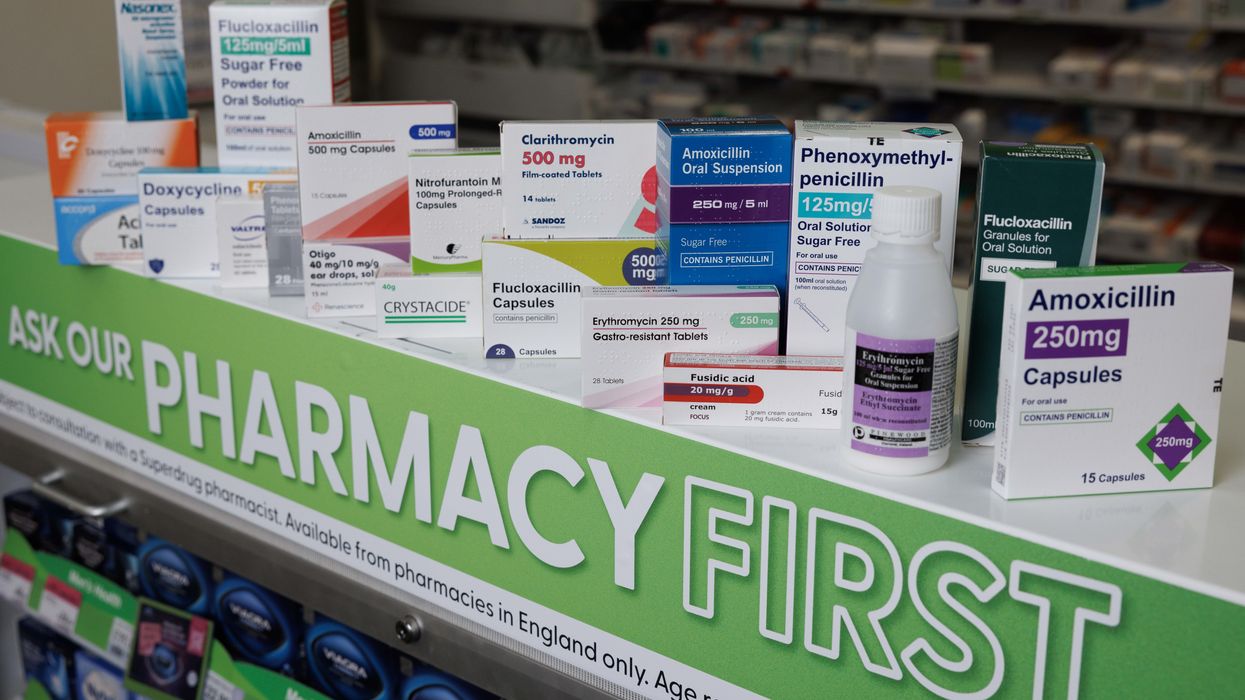Lindsay & Gilmour, one of Scotland’s largest independent pharmacy groups, is steeped in history.
Established in Edinburgh by pharmacist Robert Lindsay in 1826 at a time when pharmacists were proudly “making up medicines on the premises from fairly simple ingredients,” the group has now invested in technology that will pack medicines alongside apps that facilitate dialogue with patients.
Yet one of the oldest established pharmacies in Scotland, Lindsay & Gilmour has been trading from the same site where it all began, in Elm Row at the top of Leith Walk in Edinburgh.
And from Smith’s Place, a magnificent Georgian Townhouse purchased by the company in 1830 and home of the groups Pharmacy Support Office is where its managing director for six years, Phil Galt, crafts his business strategies from, aiming to make it Scotland’s leading pharmacy group.
“My strategy is to make sure that Lindsay & Gilmour is the best place to work. I want people to come and work for us, but most importantly enjoy what they do. We look after our people well, so they’ll look after our patients. And that’s at the heart of everything we stand for.”
As an independent pharmacy group, Lindsay & Gilmour has balanced the need to embrace change while retaining their hard-earned legacy of trust, as demonstrated in the business growth (now operating 31 pharmacies), a growing talent pool within the company, increased staff retention and improved brand recognition.
While the group strives to combine the immediacy, friendliness and responsiveness of an independent pharmacy with the efficiency and buying power of a multiple, it has also taken a leading role in bringing new technologies to the community pharmacy sector, combining the irreplaceable human face of community pharmacists with innovative technologies for the benefit of both the business and patients alike. Automation has been introduced across the business to improve both the speed and efficiency of the dispensing process and stock control.
“Currently we have robots in three different locations, and more to follow,” says Phil, adding: “Automation is essential to help us manage volume. They also drive up patient safety and efficiencies as well as freeing up staff time and improving overall patient experience.”
Conscious of evolving consumer habits, Lindsay & Gilmour has, in recent years, also begun a major new digital communications campaign to deliver key information to their potential customers at a time and place convenient to them. Its innovative digital marketing strategy lays a strong emphasis on vibrant graphics, images, video and more targeted, topical and relevant content to increase customer engagement.
Phil said: “We have done a lot of work over the last two years in terms of engaging the communities. We’ve used social media much more than we have ever done before –Facebook, Twitter, etc. – actively engaging with our communities.”
Keen to listen to their customers, the group used traditional ‘mystery shopper’ visits in the past but this didn’t deliver the desired results they were looking for. The chain then introduced customer feedback ‘Buzz Boxes’ to their pharmacies which allowed them to use feedback and customer data to improve patient experience.
“The biggest surprise for me is the amount of real-time data we receive from our customers, it’s really helpful and allows us to be a lot more proactive in our approach to customer service. One of the key strands of our strategy is to be the pharmacy of choice, we want to be the go-to partner, so Buzz Box allows us to continually monitor the customer service we are delivering in our pharmacies,” Phil says.
But what about the cost? Can an average pharmacy afford it?
“They aren’t more expensive than a traditional mystery shopper programme. I found them to be very cost-effective and in terms of immediacy of the data we could make the changes quickly.” He said in the first six months, the feedback system produced 14.5K responses compared with just 60 reports from a traditional mystery shopper. “What does it mean for a patient? It’s a complete no-brainer,” he adds. “It’s quick and really easy to use, and appeals to all age demographics so customers are more likely to provide feedback.”
Recently the organisation has also been benefiting from a Patient App (Healthera) which allows it to have what Phil calls “a dialogue with our customers.”
“We are not some faceless bots. We have an active conversation with our patients. If there is an issue, we have a dialogue with our patients and resolve it straight away.
“It’s all about multiple touchpoints and how we engage with our customers better. We want patients to come to us. After all, we are a business and we want to remain a successful and sustainable one. And that means we need to provide great levels of service to all our patients but that also means we need the best people to work for us. And I believe we do.”
Following its age-old tradition of valuing people who work for the group, one of Phil’s first priorities, when he joined the organisation, was to ensure that the organisation was looking after its employees and that they were brought to the fore.
“The most important part of our business is our people. Because if I don’t have good people doing good things, we won’t have any business – it’s pretty simple, not rocket science,” he says.
“However,” he adds: “I always make sure that I provide the environment – the tools and the technology to enable people to do the best they can and enjoy what they do.”
An employee forum provides a voice for all staff and a staff newsletter, The Pulse, was launched to improve communication and facilitate information sharing. The initiative has increased staff engagement and motivation through sharing success and building brand awareness.
“We also like to tell the stories of our people – profile pieces of our colleagues – to humanise their stories so our patients ultimately benefit from the understanding of the people behind the business.”
As well as the benefit to individual patients, Lindsay & Gilmour has also expanded its relationships with local businesses and organisations. In 2018 and again in 2019, it worked with the National Museums of Scotland and others to deliver flu jabs and corporate health checks. Doing these on-site reduces the impact on those businesses.
Another major campaign built around raising awareness of its free repeat prescription and delivery service has offered a vital and convenient service to those living in rural communities, the elderly or those who work long hours during the week.
This has challenged the perception that the repeat prescription delivery service is limited to certain groups and has resulted in an uptake in registrations for the service.
In addition, there is a lot of work done with local and national charities, homeless people, local rugby and football teams.
“It’s about investing in the local community, adding or giving back,” Phil says with a hint of pride and fulfilment in his tone.
“At Lindsay & Gilmour we live and work alongside our local communities. We are like a family. And that’s a big thing for me as a business,” he adds.
Commenting on his team winning last year’s ‘Pharmacy Business Enterprise Award’, Phil said: “It’s an acknowledgement from our peers, the wider pharmacy sector of the great work we all do. Without the contribution of everyone in our organisation, and that’s from the pharmacist right down to the delivery driver, our warehouse and support office colleagues – everybody has an equal hand in it, everyone’s contribution is equal and valued –we are all part of the colourful jigsaw that makes Lindsay & Gilmour what it is. Everyone has a part to play in it and I reinforce that all the time.”
Phil joined the Scottish group in 2014, after working in various pharmacy roles in England for nearly 15 years.
“When I saw the Scottish pharmacy contract, I was absolutely delighted!” he enthused.
Unlike in England where he witnessed pharmacies struggling, seeing many positive developments in pharmacy practice across Scotland felt like a breath of fresh air. Although 2016 funding cuts in England were yet to kick in, he was pleasantly surprised by the innovative pharmacy contract and the fact that there were no funding cuts in Scotland where annual uplifts were the norm.
He was particularly impressed with the work done by the negotiating body in Scotland, Community Pharmacy Scotland, which views itself as having a far wider role than its counterparts in the rest of the UK.
“We do share many of the same challenges that pharmacies face across the UK – a tight public purse and ever-increasing demand for healthcare. But I am proud to be working in Scotland where the future for pharmacy is bright,” he said, crediting Community Pharmacy Scotland for ensuring that “the sector was stable and progressing nationally.”
While most community services are provided nationally in Scotland there are also a range of local pharmacy services, individual NHS PGDs and service formularies across the 14 regional NHS boards.
The challenge for pharmacy, however, will be how to cope with these new developments while at the same time safely and accurately dispensing ever-increasing numbers of prescriptions.
Enterprising ideas around technology, which Phil has a deep and innate interest in, could soon consign such concerns to the annals of history.
But ultimately it is all about the people. “Technology will never replace the human face of pharmacy,” says Phil. “Look after your people and they will look after your patients and your business.”
This article also appears in the February issue of Pharmacy Business.











